
by Sandra Gulland | Dec 30, 2017 | Adventures of a Writing Life |
Are you a getting-things-done systems junkie? I am, and I thought I had my personal system settled once and for all until I took a Tim Grahl course on being a productive writer. Yeah, I know, my sixth novel will be published this coming spring, so some might think I already am productive. Not so! It takes me three to five years to write a novel, and I find that I’m constantly chasing my tail. I’m not getting younger and I have a number of books I want to write.
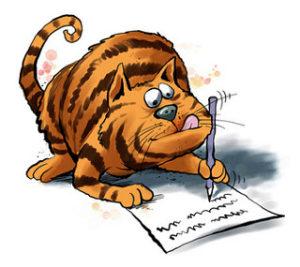
So here is my current system, in short:
I use the Things app as a database for recording the procedures of those chores I do rarely (like taxes) — things that I forget how to actually do. Keeping an itemized procedures list means I don’t have to reinvent the wheel each time. Time saver!
I use Levenger Circa notebooks which are handy because you can add pages and take them out. I would stick scraps of little post-its with To Do items on them onto the notebook pages. The problem was that I rarely looked at all of them, so some important items were forgotten. Also, I was drowning in scraps of tiny post-it notes.
One thing that has worked for years: I restricted my daily schedule and things I aimed to do onto a 3×3 post-it. (I’m partial to white, which I have to order.)
The new and revelatory addition to my system is using The Autofocus Time Management System. I tend to stall when faced with doing something I’m just not into doing.This system solves that problem because there is always something I’m inspired to actually do. Also, I tend not to forget things. I recommend it!
Good luck! I’m curious to learn your tips. If you use this system and like it, let me know.
Happy New Year!

SaveSave
SaveSave
SaveSave
SaveSave
SaveSave
SaveSave

by Sandra Gulland | Jan 26, 2015 | Adventures of a Writing Life, Resources for Writers, The Writing Process |
We’re back in San Miguel de Allende, back from the beach. It’s always wonderful to come home, but I miss the heat and the sound of the surf. I miss the enchantment of sunsets.
I’m sitting now in my office with my favourite coffee mug on the table beside me and my computer on my lap. I soon must get back to working on Draft 5 of The Game of Hope.
But first: it’s time to go through our photos, is it not? Here’s a panorama stitched together with DoubleTake software:

As I slowly get my office back in order—unpacking, finding the cords, the stacks of Things To Do�—I tell myself that now is the time to be selective: throw things out. And so I try: one, maybe two truly-useless things get pitched, but only after great deliberation. Hopeless!
Have you watched this Seinfeld video on “Too Much Stuff“? He’s “congratulating” everyone in the audience for having won a flat-screen TV:
Talk about stuff! Will Self’s writing room: hard to imagine.
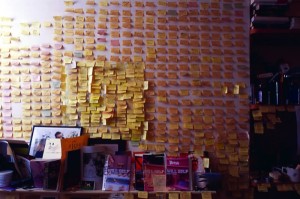
Coincidently, I use his book Psycho Geography as a mouse pad.

by Sandra Gulland | Jan 23, 2015 | Adventures of a Writing Life, On Research, Resources, Resources for Writers, The Writing Process |
My husband and I have been staying in one of our favourite spots, a Solecito casita on beautiful Playa Blanca on the Mexican Pacific coast. (Our casita: the one shown above.)
It’s a totally relaxing time for us, and—surprisingly—one of the pleasures, for me, is that I get quite a bit done:
• I edited the 4th draft of The Game of Hope and began draft 5.
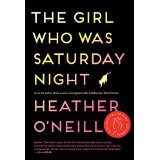
• I read a lot, likely because I’m reading on my little Kindle, and not on the Kindle app on my Net-connected iPad.
• I finished THE BOOK OF STRANGE NEW THINGS by Michel Faber (my first Sci-Fi), and am close to finishing THE GIRL WHO WAS SATURDAY NIGHT by Heather O’Neill. (Delightful! I have previously read and very much enjoyed LULLABIES FOR LITTLE CRIMINALS.) I’m still reading and highly recommend Publishing 101 by Jane Friedman as well as various research books.
• I read a pdf of wonderful novel that I gave a rave quote for … I’ll have more to say on this book when it is published in March.

• I listened to a wonderful audible recording of ALL THE LIGHT YOU CANNOT SEE, a novel by Anthony Doerr that was on virtually every “best of 2014” book list.
Coursera.org: How to Learn
I caught up on the video lectures of a Coursera course I’m taking on how to learn. (You can watch them here.)
Why am I following this course? Because I am determined to become more conversant in both French and Spanish. (In fact, as I go for my daily walk on the beach, I listen to French tapes.)
My research method
This course has got me reconsidering my writing research method. I used to write notes out by hand. Now I prefer highlighting passages on Kindle and sending these to Evernote—knowing that I can always find the information should I need it.
Effortless! Right?
Not exactly. Evernote is great, but the trouble is: when I look for something on Evernote, I find the mass of notes overwhelming. It’s not that functional system for me, in truth, and I’ve long had a hunch that writing down notes by hand was more effective. This Coursera course has confirmed the importance of approaching information through different media.
Another problem I have is resistance to organizing my research. I’m content to cruse the Net, buy new books, read and highlight them, but I’m somewhat scattered and slapdash about it, in truth.
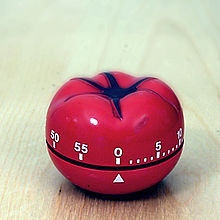
This course has reminded me of the value of the Pomodoro approach: setting a timer for 25 minutes of focussed distraction-free (i.e. Net-free) period of time.
It has also reminded me of the key importance of review: and this is where note-taking comes in.
The course also emphasises how important relaxation is to learning. And so … to the hammock.
by Sandra Gulland | Dec 29, 2014 | Adventures of a Writing Life |
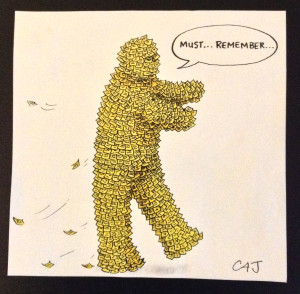
Last year, I posted a blog with almost this same name—Getting ready for 2014: resolutions on book-keeping and book-making.
I wrote:
We’ve made our resolutions, and one of mine is get to the bottom of the mail in-box three times in the year ahead. Wish me luck.
I’ve gotten fairly good about in-box zero; what I’m not that good at is actually dealing with the emails that I hide away in files with names like “URGENT” “FOLLOW-UP!”
Another resolution is to deliver The Game of Hope ahead of schedule (it’s due December 1). That will take more than luck: that will take constant perseverance!
Bravo! I did manage to do this, sending The Game of Hope to my publisher two days ahead of the due date.
I had other resolutions, of course: keeping my weight down, exercising, etc., which I kept fairly in-line. (I could have done better.)
What I did evolve this year—eventually—were two motivational systems for actually getting things done.
1: The Post-It method
- My To Do List for the day must fit on a post-it note (and not a big one).
- Each item should be measurable: i.e. “30 minutes, bookkeeping.”
- Tasks that are irksome should be introduced in 15-min. chunks. (I.e., said bookkeeping.)
2: The Jerry Seinfeld “Don’t Break the Chain” method
In conjunction with the daily post-it (as well as a more extensive compost-heap of long-term things to do), I’ve started using the Seinfeld method for the one daily task I resist most strongly: exercising. That I’ve finally found a way to actually overcome my resistance is a strong testimonial to the effectiveness of this method.
Here is a snap from my “Don’t Break the Chain” calendar earlier this year:
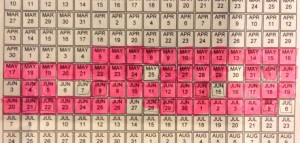
Every day I do what I’ve promised (30 minutes on the treadmill, in this instance), I colour in the date. The idea is not to have any gaps—and the visual reminder, for me, is strong.
Seinfeld originally suggested this system for writing. (I wrote about using the Seinfeld “Don’t Break the Chain” method in another blog post: A writer’s routine: how many … hours, days, word?) I highly recommend this system if you want to write very day: just make sure that the daily goal you set isn’t overly ambitious. It’s better to write for 30 minutes a day every day, than to attempt 2 hours a day and fail.
“Don’t Break the Chain” calendars
If you’re going to use the Seinfeld method, you need to print out a continuous calendar. Click to download a printable version of this one I created using PDFCalendar.com:
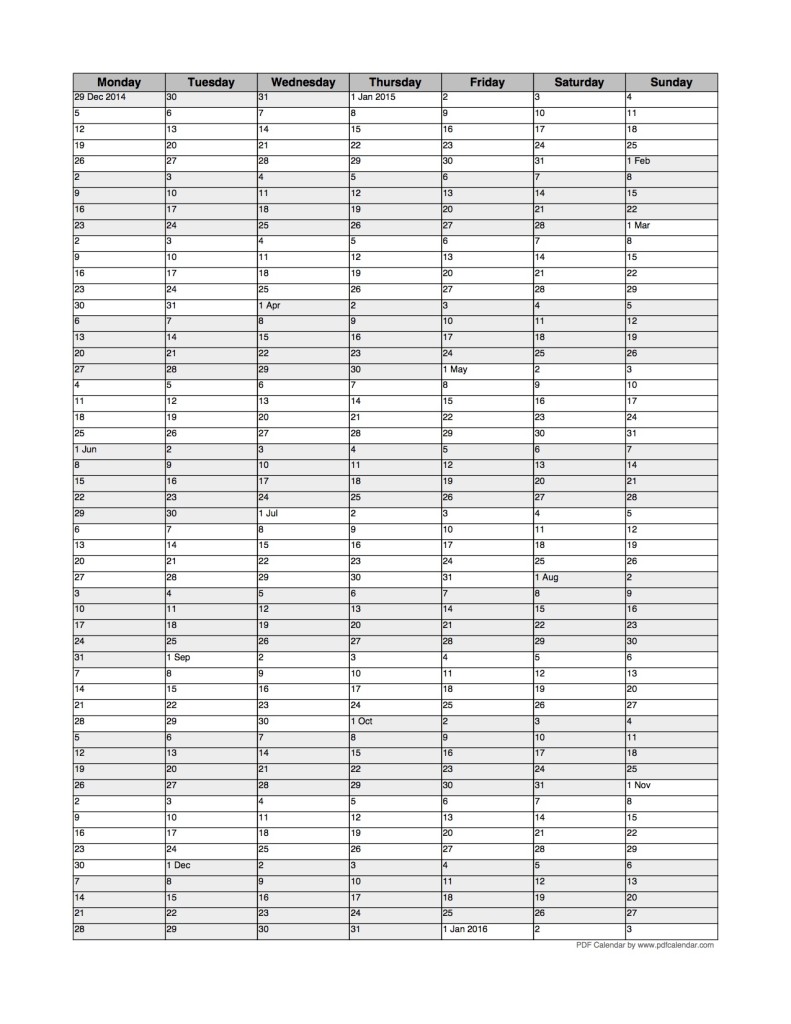
Another continuous calendar created by David Seah allows you to make notes:
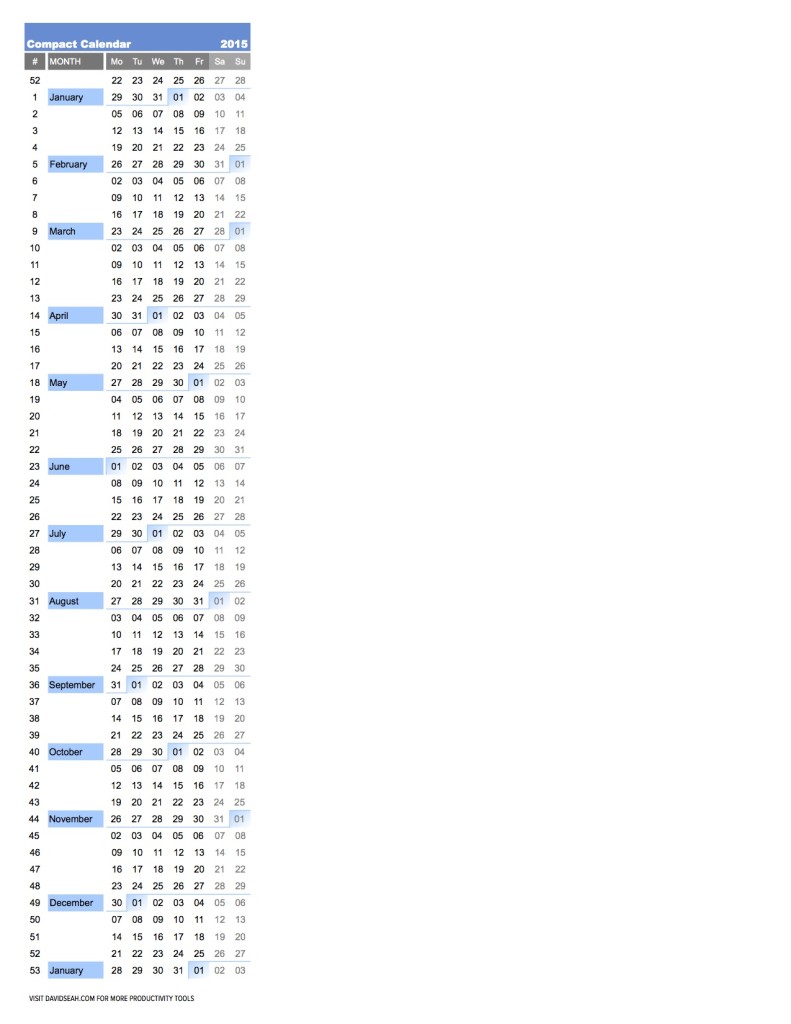
The Writer’s Store also offers a calendar to print out: here.
I have a system when it comes to writing a draft: I set a goal of about about 1000 words a day and record my progress in a small Moleskine diary. If you are casting about for a way to keep track, consider this Word Tracking Calendar, also by David Seah.
I was amused to find these very old To Do Lists of mine:
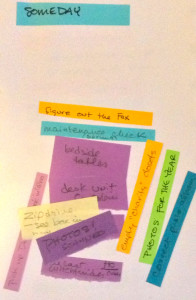
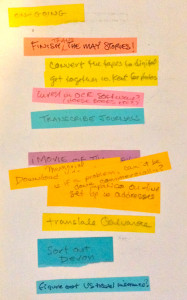
![]()
![]()
The colours were random—they did not signify anything. Note the To Do: “figure out the fax machine.” I never did manage that!
My resolutions this year? To finish The Game of Hope and write a solid first draft of The Princess Problem (the working title of the second Young Adult about Hortense). Also: keep up with daily exercise.
And, of course: in-box zero—but without simply filing away the emails to be answered.

















